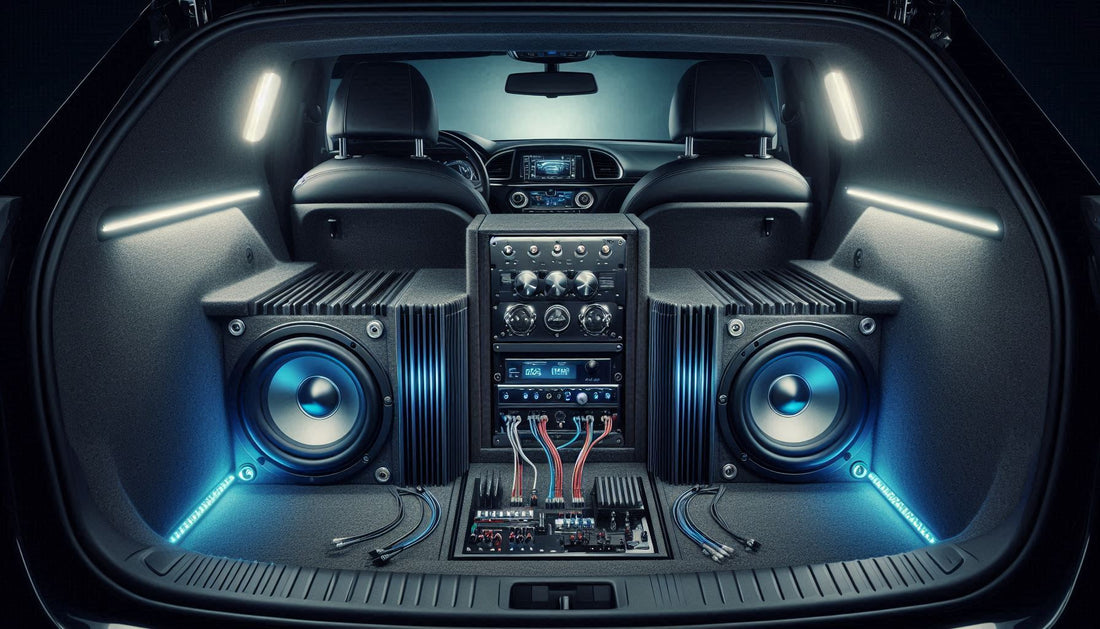
2 Ohm vs. 4 Ohm Speakers: What’s the Difference and Why It Matters
Share
Introduction
When setting up or upgrading your car audio system, one of the critical decisions you’ll face is choosing between 2-ohm and 4-ohm speakers. Ohms, which refer to electrical impedance, significantly impact the performance of your audio system. It’s essential to understand how impedance affects sound quality, power consumption, and wiring choices to make an informed decision. Both 2-ohm and 4-ohm speakers can deliver great audio, but they behave differently when it comes to the amount of power they require and how they interact with amplifiers and wiring.
You might also find these blogs helpful:
What's the difference between Wire and Cable
What's the difference between Speaker and Instrument Cables
What's the difference between Home and Vehicle Circuit Breaker

What’s the Difference?
2 Ohm Speakers:
- Lower impedance (2 ohms) means that these speakers allow more current to flow from the amplifier.
- Higher power output from the amplifier. Since there is less resistance, the amp can push more power into the speakers, resulting in louder sound at the same volume setting.
- Less accurate sound reproduction due to increased strain on the amplifier. The lower resistance can sometimes cause distortion if the amplifier isn't up to handling the extra power.
4 Ohm Speakers:
- Higher impedance (4 ohms) means that these speakers provide more resistance to current flow.
- Lower power output, but the sound is typically cleaner and more controlled.
- More common in car audio systems due to their balanced power consumption and reliable sound quality.
In short, if you're looking for more volume and have an amplifier capable of handling the increased power demand, 2-ohm speakers may be a good choice. On the other hand, if you prioritize sound clarity and accuracy, 4-ohm speakers might be better suited to your needs.

How Impedance Affects Amplifiers and Wiring
The type of amplifier you use will also determine how well it pairs with 2-ohm or 4-ohm speakers. Amplifiers are rated to handle specific impedance loads, and using an amplifier that isn't designed for your speakers can cause overheating, distortion, or even damage to the system.
A key consideration when choosing between 2-ohm and 4-ohm speakers is the amount of current the amplifier can handle. Amplifiers work harder with 2-ohm speakers because they allow more current to flow, which also means you need to be cautious of your wiring setup.
Choosing the Right Wire Gauge for 2 Ohm vs 4 Ohm Systems
The type of wire gauge you use in your car audio system plays an important role in ensuring optimal performance. A lower impedance (2 ohms) system draws more current than a higher impedance (4 ohms) system, so the wire must be capable of handling the extra current flow.
- For 2-ohm systems, you will generally need a lower gauge wire (thicker) because the system demands more current. A 12-gauge wire is often recommended for most car audio setups, but if you're running particularly long distances or very high-powered speakers, consider stepping down to a 10-gauge wire for reduced resistance and voltage drop.
- For 4-ohm systems, you can often get away with a higher gauge wire (thinner) such as 14-gauge wire. This is because the current draw is less significant compared to a 2-ohm system, meaning you don’t need as much wire thickness to carry the electrical load efficiently.

Power Efficiency: Which Is Better?
When comparing 2-ohm and 4-ohm systems, one of the key factors to consider is power efficiency. A 2-ohm speaker will draw more power from the amplifier, which can lead to increased heat generation and require more robust wiring to prevent voltage drop. This can also affect the overall efficiency of your system, as you may need a larger power supply to maintain performance.
On the other hand, 4-ohm systems are generally more efficient in terms of power consumption, meaning you’re less likely to encounter overheating issues, and your wiring doesn’t need to be as heavy-duty.
Balancing Sound Quality and Wiring
The choice between 2 ohms and 4 ohms not only influences how your amplifier performs but also how you wire your system. Lower resistance in a 2-ohm system means the amplifier pushes more power, potentially delivering louder sound—but without the right wire gauge, you risk overheating the wires and losing audio clarity.
In contrast, a 4-ohm system may not provide the same booming volume, but with the proper wiring, it can deliver more refined and consistent sound. The key is finding the right balance between your sound expectations and your wiring setup.

Conclusion
Choosing between 2-ohm and 4-ohm speakers for your car audio system depends on your priorities for volume, sound quality, and system efficiency. While 2-ohm systems can give you a louder sound, they also require more power and heavier wiring to prevent issues like overheating or voltage drop. On the other hand, 4-ohm systems provide clearer sound and are more forgiving when it comes to wiring and power requirements.
In both cases, selecting the appropriate wire gauge is critical to the success of your system. A general rule is to use a lower gauge wire for 2-ohm setups to handle the increased current demand and a higher gauge wire for 4-ohm systems where the current load is more manageable. Balancing these elements will ensure you get the best performance out of your car audio setup.








